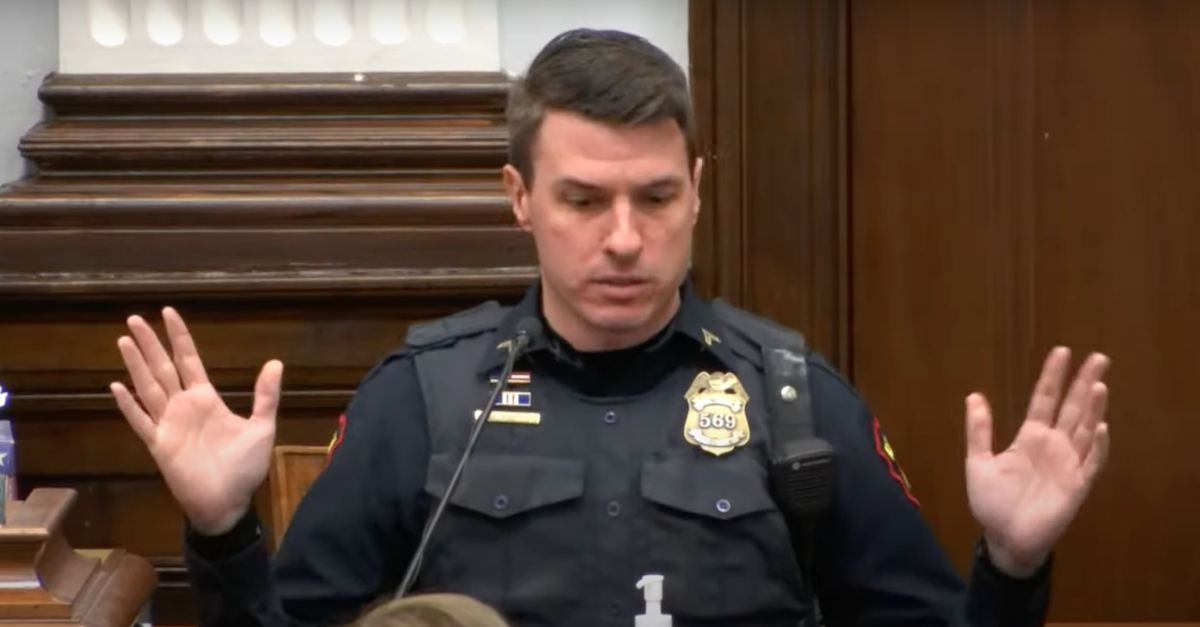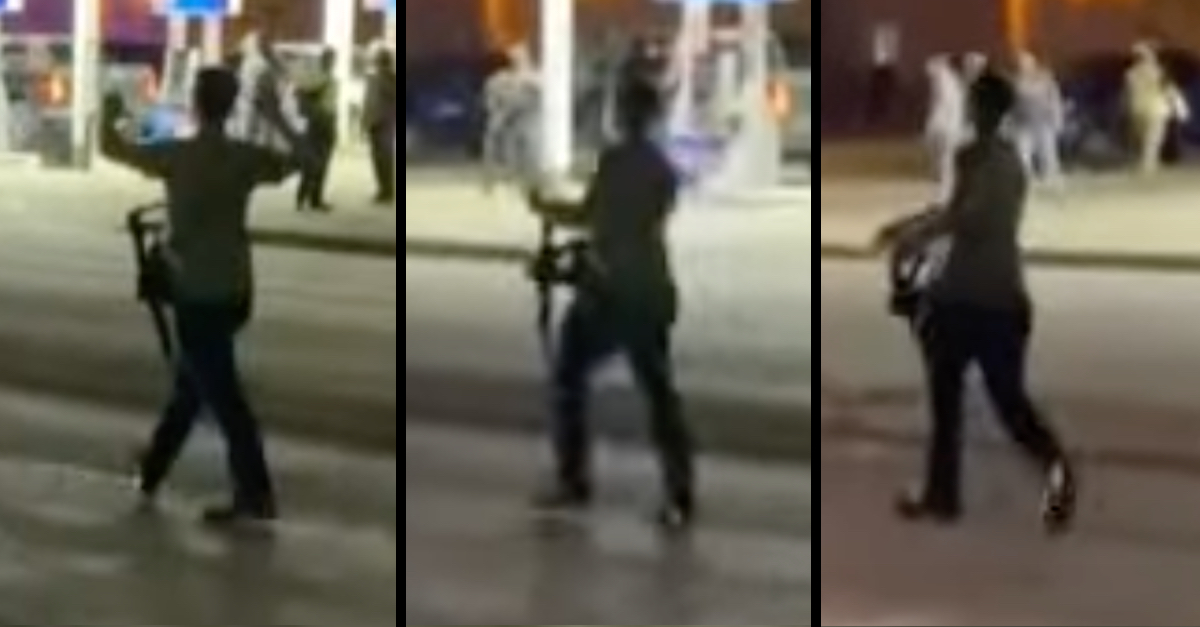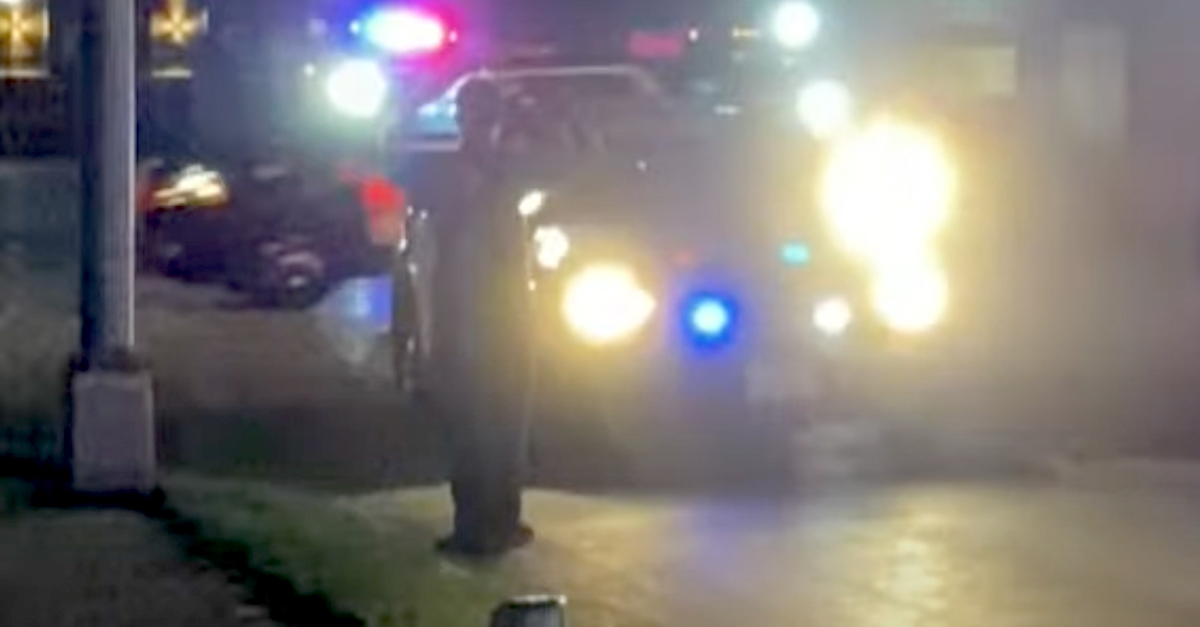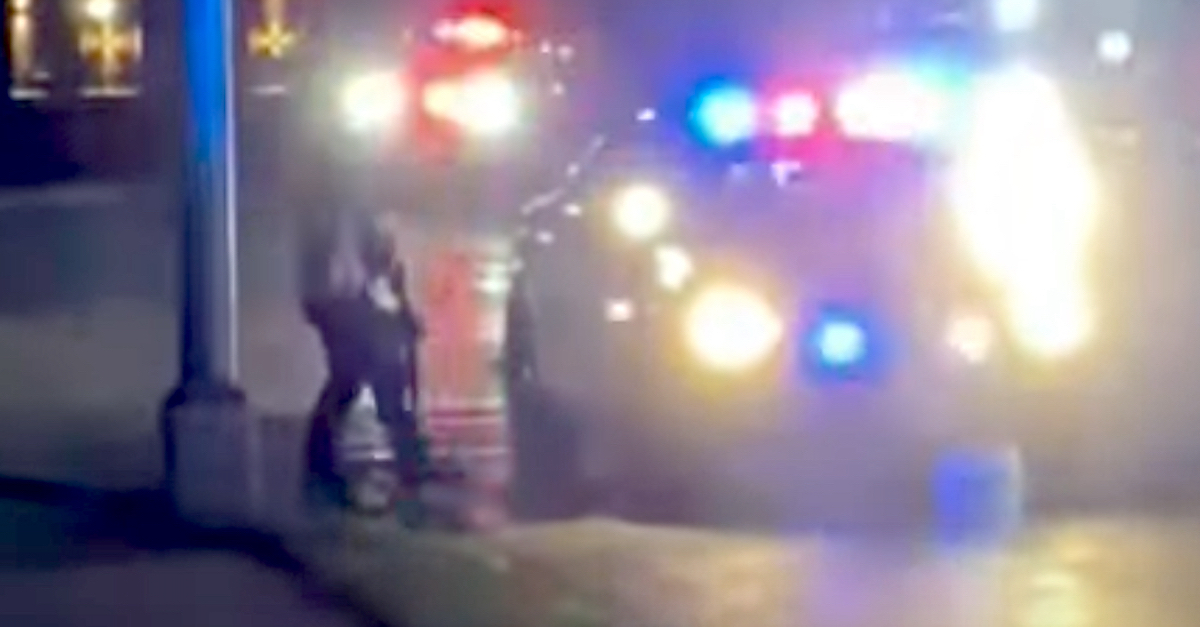
Defense attorneys Natalie Wisco and Corey Chirafisi speak with Kyle Rittenhouse on Fri., Nov. 5, 2021, at the conclusion of the first week of testimony. (Image © Mark Hertzberg/Zuma Press Wire/Pool.)
A Kenosha, Wisconsin police officer says he pulled his service weapon on Kyle Rittenhouse when the latter approached the officer’s squad car while touching his AR-15-style rifle several times — concerning the officer and his partner that Rittenhouse was a possible threat.
The officer, Pep Moretti, said he was unaware Rittenhouse had just fatally shot two people and had injured a third. The officer also testified that while he did generally instruct many of the people present that night to “go home,” he did not tell Rittenhouse to do so when Rittenhouse approached his squad car.
Moretti on Friday testified that he responded to a report of a shooting by driving south on Sheridan Road after Rittenhouse opened fire. His goal was to stop the threat and render lifesaving measures. However, when he heard a rifle was involved, he stopped to let armored police vehicles pass his patrol car. He said his armored police vest was rated for handguns, not for rifles; the doors of his squad car would also not have stopped a rifle bullet, he added.
Moretti said that a “white male” who was then “unknown” approached his patrol vehicle after he allowed the armored vehicles to pass. He later learned the male was Rittenhouse.
“He had a rifle that was slung and somehow attached to his body. He had his hands, somewhat similar to this,” Moretti said as he placed his palms out in a surrender motion.

Kenosha, Wis. police officer Pep Moretti explains how Kyle Rittenhouse approached his squad car after shooting three people. (Image via the Law&Crime Network.)
Moretti said he did not assume Rittenhouse was involved with the shooting.
“In my prior experience in law enforcement, when somebody surrenders to us, they will generally put their hands up, but then they will take a further step and generally drop to their knees, or they will lay in a prone position and make some type of further action,” Moretti testified. “They will usually follow commands when they’re attempting to surrender. I’ve never in my career had somebody put their hands up and continue to advance and disobey orders from us to not advance on us.”
Moretti said officers were “surrounded” all week by armed individuals. It was not uncommon in the midst of the “civil unrest,” he said, to see someone armed with a pistol or a rifle.
“The advice that my partner and I gave everybody that night was, ‘if you’re a supporter of us, or you’re trying to help, go home,'” the officer continued. “There was a curfew in place for a reason, and being out here is only causing more problems. It’s hard to tell who’s here to be a problem and who’s not.”
Moretti said officers were reserving curfew tickets only for the most “severe” incidents they witnessed because the police “didn’t have the capability or the manpower to address everything that happened in front of us.”
Despite commands to the con over a loudspeaker, Moretti said Rittenhouse disobeyed those commands and “approached the passenger side of our patrol vehicle.”
“With him disobeying the commands and being armed with a rifle like that, I drew my service weapon,” Moretti testified, “and Officer Krueger deployed pepper spray because it became clear and obvious that he was not going to go away, that he continued to just advance on us and disobey commands.”
The testifying officer said Rittenhouse’s “advance” made him fear an “ambush” because the environment was that of a “war zone.” He said he drew his gun but eventually withdrew it with his right hand while he kept his left hand on his cruiser’s steering wheel.
“We were surrounded, the city was burning and on fire, we were just outnumbered and completely surrounded,” Moretti said. “I would imagine that I would have had it [the gun] pointed at him, because somebody advancing on us with a rifle, not obeying commands at that point would be taken as a threat.”
Moretti agreed that there was “more fire and property damage” the night before Rittenhouse killed two and injured a third person.
The pepper spray forced Rittenhouse away from the squad car. The defendant kept walking north. Moretti said that was the “desired effect.”
Moretti and his partner then proceeded to find Gaige Grosskreutz badly wounded in the arm; Grosskreutz was loaded into an armored vehicle called a Bearcat and taken immediately to a hospital. Moretti said he escorted the Bearcat out of the area as gunfire continued to erupt. He said one of the reasons he didn’t immediately suspect Rittenhouse as the shooter was because gunfire continued after Rittenhouse departed the area.
Under cross-examination, Moretti said there were more “armed” people out on Aug. 25 than he saw on Aug. 24. Defense attorney Corey Chirafisi attempted to ask Moretti to agree that the increased number of unofficial protective forces also led to a decreased number of fires during the civil unrest. Moretti said he was unwilling to make a direct connection between the two for the purposes of establishing a cause and effect.
While watching video of Rittenhouse approaching him on Aug. 25, Moretti noted that Rittenhouse invariably placed his hands in a position suggesting a surrender but then touched — or, in Moretti’s words, “did manipulate” — his rifle several times in the process. Moretti said he was trying to figure out “what this is.”

Three successive still frames from an evidence video show Kyle Rittenhouse approaching Kenosha Police Officer Pep Moretti’s squad car on Aug. 25, 2020. (Images via the Law&Crime Network.)
Moretti said he and/or his partner eventually told Rittenhouse to get out of the road when Rittenhouse was closer to their squad car. He said he could not hear other bystanders who were yelling that Rittenhouse had shot someone.

Kenosha police officer Pep Moretti says he and his parter told Rittenhouse to get out of the road when he was closer to their squad car. (Image via the Law&Crime Network.)
Rittenhouse eventually stepped out of the way when Moretti said Rittenhouse was pepper sprayed.
“I don’t recall anybody telling him to go home,” Moretti said — clarifying his previous testimony that he and his partner were generally telling people to disperse. “The only commands I recall giving him were to get out of the road and to stay back.”

A still frame from an evidence video shows the moment when Kenosha police officers began to pepper spray Kyle Rittenhouse to get him out of the road. They said he touched his rifle several times when he approached their squad car and that they were concerned he was a threat. (Image via the Law&Crime Network.)
After a few subsequent questions, Judge Bruce Schroeder released the jury for the day on Friday and concomitantly for the weekend. Testimony resumes Monday. The trial is expected to last about two weeks.
[Images as noted.]